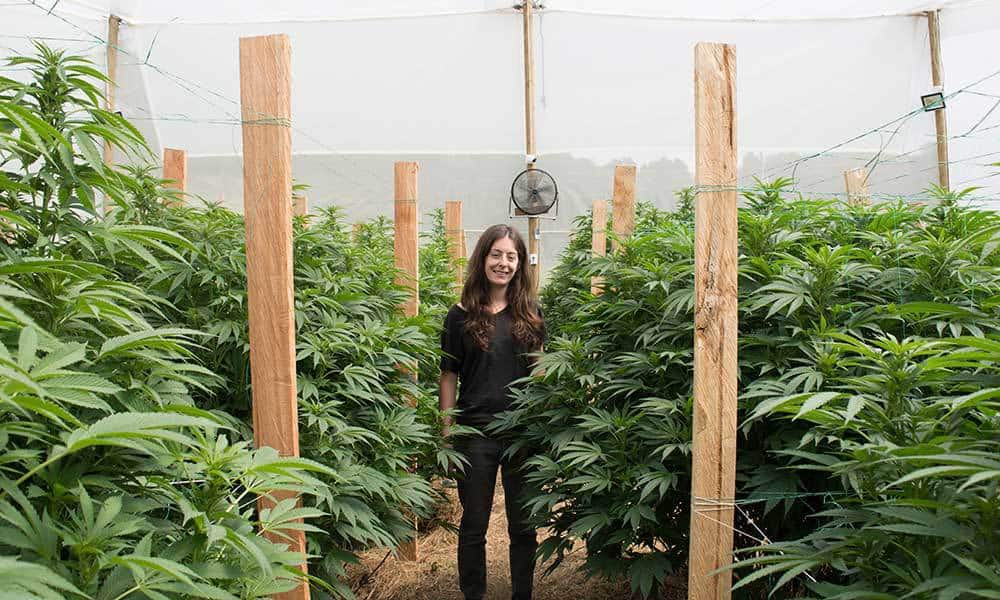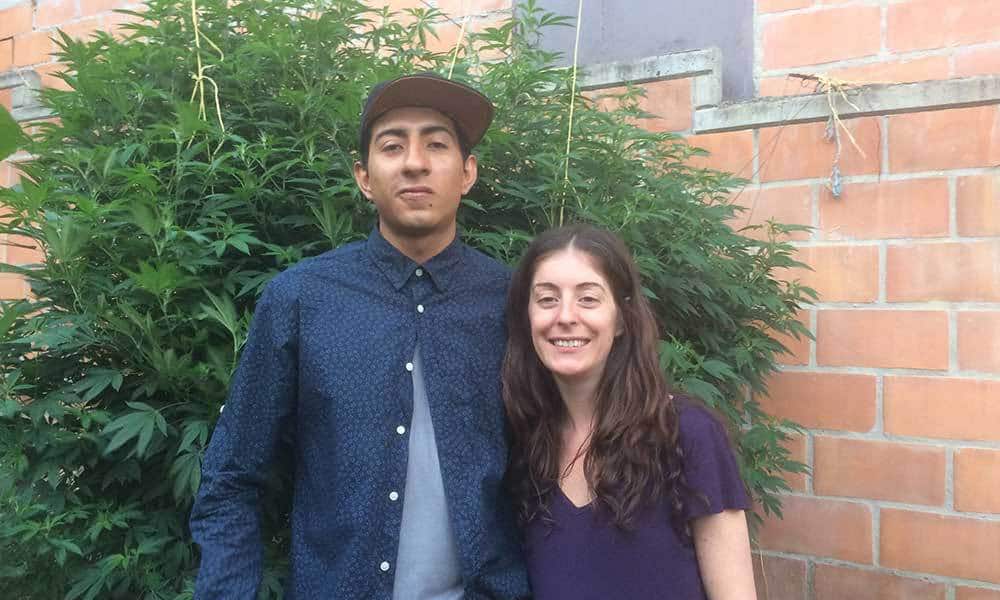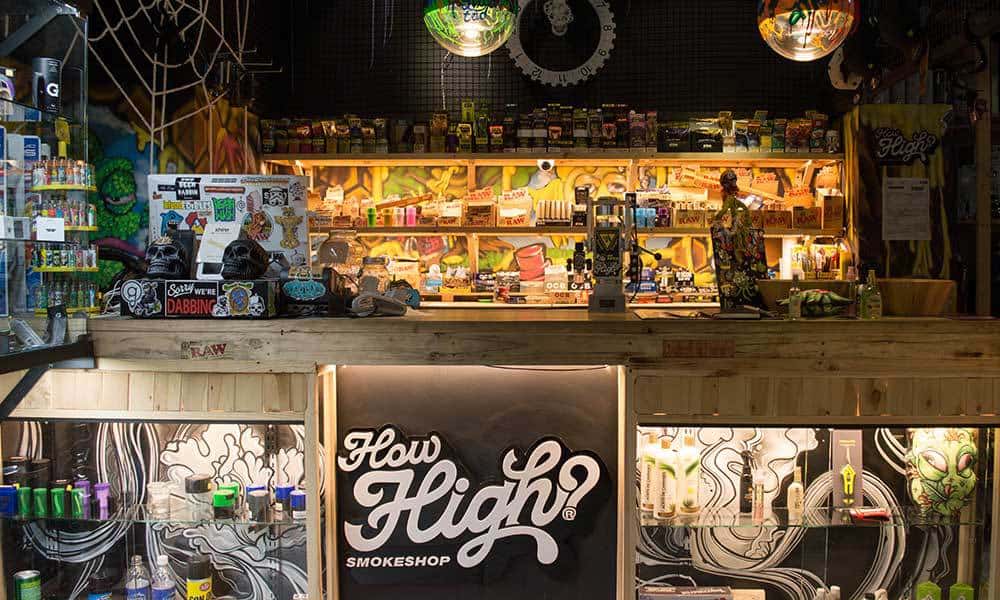The post Inside Colombia’s Legal Weed Scene appeared first on High Times.
In 1991, Medellín, Colombia, was the murder capital of the world. But when I visited in October of this year, I was exploring a city of progress and innovation. That’s because over the past 20 years, social initiatives, like the construction of libraries and schools in the poorest areas and infrastructure projects like the metro and its metro cable system, have helped revolutionize Medellín. That spirit of innovation and change is helping Colombia’s legal cannabis scene develop—not just in the city—but around the entire country.
Since a Constitutional Court ruling in 1994, personal use possession of cannabis and other drugs in Colombia has been decriminalized. However, it wasn’t until 2012 that the government officially decriminalized personal use possession, and instead of detaining users, began encouraging treatment.
Considering Colombia’s history of narco-fueled violence, drug trafficking, civil war, and U.S. involvement, it was a huge step when President Juan Manuel Santos signed a decree in 2015 legalizing medical cannabis.
In November of this year, 14 licenses were given to medical cannabusinesses by the Colombian Ministry of Health for the cultivation of psychoactive and non-psychoactive plants, as well as for the use of seeds.

Michelle Janikian/High Times
Medical cannabis patients need a prescription from a doctor, and the government has made it clear that this law does not make cannabis legal for recreational use. However, it is legal for any individual to grow 20 personal use plants and possess up to 20 grams of personal use flower.
“That’s the catch,” said cannabis cultivator and manager at How High Smoke Shop, who goes by the alias Paco María. “It’s difficult to understand Colombian law because you can grow up to 20 plants, but if police catch you with more than 20 grams, you can be in very big trouble.”
It can put personal use growers under a lot of stress, especially considering the size that plants can grow outdoors in Colombia—they’re huge!
I was lucky enough to see two gorgeous personal use gardens in and around Medellín, each with exactly 19 plants of different varieties, shapes and colors. But what stood out the most? Both gardens had vegging plants that were over two meters (six feet) tall, still growing toward their full flowering height.
“Colombia has one of the greatest climates and soil conditions to grow cannabis, it’s easy and fast,” said Paco María. “It’s a cannabis paradise.”

Michelle Janikian/High Times
One of the two gardens I saw had plants completely outdoors, exposed to all of the elements and within the city limits. The view was incredible; through the small forest of aromatic weed plants and a gap in the surrounding buildings, I could see the Andes mountains that surround Medellín and the city limit that creeps up.
The grower behind this magical city garden, who goes by the alias “Collie Dread,” has been cultivating cannabis for over 10 years and has started one of the pioneer seed banks in Colombia, Bless Seeds.
He gave me a tour of his garden, identifying different plants, like one of his own creations, “Congo Haze,” a “100 percent pure sativa” he’s been cultivating since 2006.
“At the moment, we have a great variety of genetics in our garden, indicas, sativas and hybrids. We also have varieties rich in CBD,” Collie Dread told me.
As he showed me around, he also explained why Colombia is such a unique and ideal place to cultivate cannabis.
“The climate is perfect; it can be cultivated in any part of the country, both outdoors and indoors,” said Collie Dread. “For cold climates, we would have to use greenhouses for our predominantly indica plants. But with our pure Colombian sativas, there is no problem. They are 100 percent adapted to the high mountains!”

Michelle Janikian poses with Collie Dread in front of our favorite plant. (Michelle Janikian/High Times)
The mountainous terrain proves to be just as beneficial to cannabis plants as coffee plants.
In fact, the naturally high UV light from high altitudes can help increase THC production. Not to mention, Colombia is the second most biodiverse country in the world after its neighbor, Brasil.
But what really stands out is Colombia’s natural and year-long 12 hours of light and 12 hours of dark (12/12) photoperiod.
“Colombia is an ideal place [to cultivate cannabis], first of all, because its photoperiod is 12/12 all year,” said Collie. “So we are able to harvest all year long and can take advantage of the sun as much as possible.”
Both growers I spoke to told me they can harvest three times a year outdoors because of the photoperiod and temperature.
For vegging plants, growers like Collie Dread rig up lights above their outdoor plants to leave on for a few hours at night. Then for flowering, they let the sun do all the work. This way, they use minimal electricity, and what they do use is really affordable. Collie told me his monthly bill is only 20,000 Colombian pesos (equivalent to a little less than $7 USD).
The auto cultivo (Spanish for personal use cultivation) scene is growing in Colombia, and there are a number of grow shops around the country. At Collie’s recommendation, I went to visit How High Smoke Shop in the “El Poblado” neighborhood of Medellín.
How High’s walls are lined with glass cases displaying every smoking accessory imaginable, from a variety of vape pens, papers and glass bowls to designer bongs, dab rigs and hookahs. It’s a well-lit shop with a friendly atmosphere and helpful staff. They’re passionate about how cannabis can help people, but that’s the one thing they still can’t sell.

How High Smoke Shop (Michelle Janikian/High Times)
“We hate when people come in here looking for drugs,” Esteban Echeverri, the owner and manager at How High, said.
He told me there’s still a strong stigma in Colombia against pot: “The stigma in Colombia is very big. People usually associate cannabis consumers with addicts, homeless and criminals.”
At How High, they promote auto cultivo, especially because buying, selling and smoking pot are all still technically illegal—but having 20 plants is totally fine.
Their shop has a whole cultivation section with equipment, fertilizers and organic products.
Despite the stigma, they do think things in Colombia are changing quickly. People are looking at the legal cannabis industry in the United States, where the sky hasn’t fallen, and want to see Colombia profiting from tax revenues and other benefits of legalization.
There are events like the “Copa Cannabica Farallones,” basically the Colombian version of a Cannabis Cup held in Calí, that promote the legal industry. The latest event recently occurred on November 10 and 11, with awards for first, second and third place indica and sativa flowers, as well as extracts with solvent and extracts without.
This year, Paco María took home third place for non-solvent extracts for a Zombie Kush concentrate he made—and cultivated. Last year, he won first and second place in the same category.
“It’s awesome for growers to have this event,” said Paco María. “It is very important and special to us, we feel that our work and passion is rewarded. It’s a place to know everyone’s work and to know if you’re doing it well.”
There are also activist groups in Colombia like the Fundaluva Foundation, started by Inés Cano, mother of the first medical cannabis patient in Colombia, Luna Valentina, who suffers from refractory epilepsy.
CBD oils are in high demand in Colombia but still technically illegal to distribute by anyone except the state. The guys at How High told me that cannabis is regulated very heavily right now to keep it out of the hands of narcos.
“People should understand first that growers are not the problem, the mafia is,” said Paco María.
Considering the country’s history, these strict regulations are understandable. But the How High guys are sure Colombians are starting to look for a change.
“More people are consuming and are changing their perspective. They are opening their minds,” said Echeverri.
In fact, they told me they think recreational cannabis will be legal in seven years in Colombia. Collie Dread told me the same, and he’s excited to be ahead of the curve when it happens.
If Colombia does legalize the plant for adult use consumption, the country could be a huge player in the international cannabis market with its excellent, year-round growing conditions. But for now, poco a poco, Colombia’s legal weed scene is growing.
The post Inside Colombia’s Legal Weed Scene appeared first on High Times.




0 DL LiNKS:
Post a Comment
Add yours...